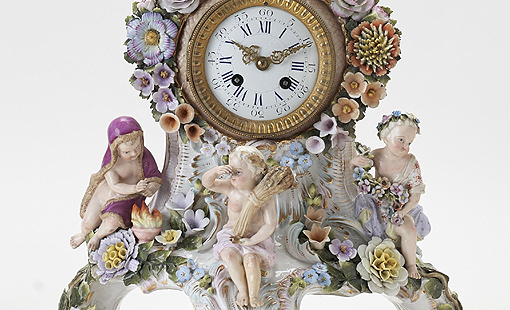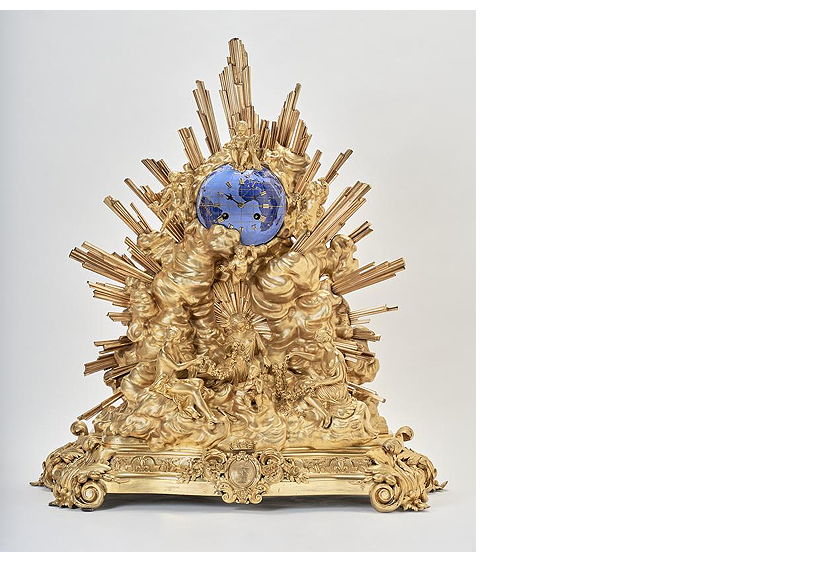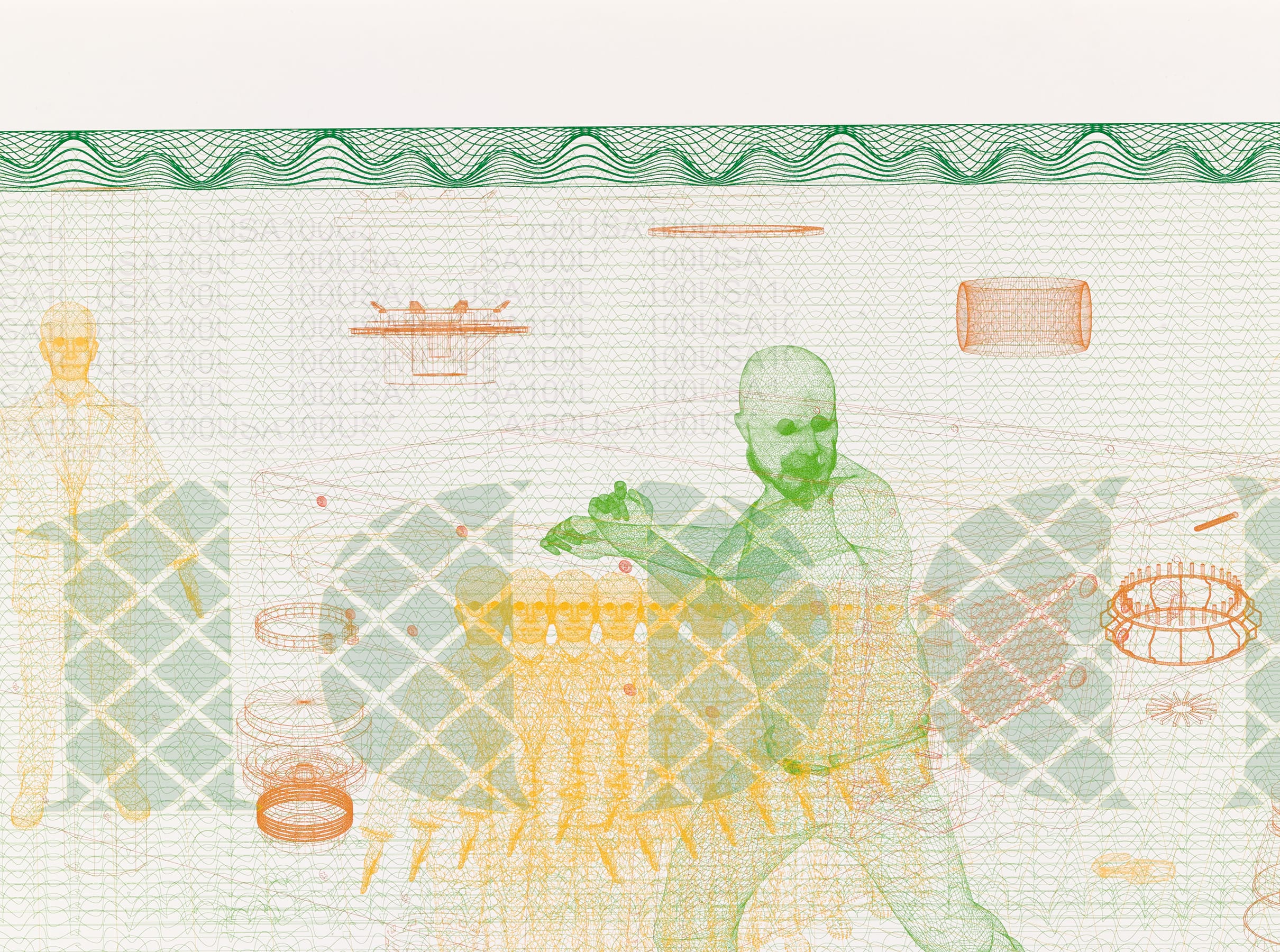
The ticking of the hours... and the movement of the seasons
Allegories of the seasons have been a constant in the history of creative art, especially in the so-called decorative arts. In clocks, art and technology come together and such allegories take on specific connotations as they link to the function of trapping and measuring time which is their very raison d’être. That function is inseparable from the striving of human beings to understand and better explain the world in which they live and the rules by which it is governed.
Clocks have always formed part of the history of the Banco de España. The oldest examples held by the bank —a bracket-type table clock whose dial is signed by Thomas Windmills and a grandfather clock by British clockmaker Diego Evans— were acquired to decorate the original headquarters of the Banco Nacional de San Carlos, the earliest forerunner of the Banco de España. Since then the bank has built up an extraordinary collection of timepieces for which it has recently published a catalogue raisonné, available in PDF![]() as a free download from the Publications section of this site. Here, we focus our attention on two of the pieces in the collection, featuring metaphorical representations of the seasons of the year in the form of putti or cherubs bearing objects with seasonal connotations. The third item is a clock that also contains allusions to the seasons, though not as its central decorative theme.
as a free download from the Publications section of this site. Here, we focus our attention on two of the pieces in the collection, featuring metaphorical representations of the seasons of the year in the form of putti or cherubs bearing objects with seasonal connotations. The third item is a clock that also contains allusions to the seasons, though not as its central decorative theme.
 Mantel clock with garniture. The Four Seasons of the Year. c. 1780. Banco de España Collection
Mantel clock with garniture. The Four Seasons of the Year. c. 1780. Banco de España Collection
The oldest is a mantel clock garniture dating from the 1780s. It was made in the German state of Thuringia, a hub for the European porcelain industry in the second half of the 18th century and throughout the 19th. Painted in soft colours, the case depicts four full-relief sculptures of children, each representing a different season of the year. Spring wears a crown of flowers and holds a garland; summer is holding stalks of grain and shielding its eyes with its right hand, as if scanning the horizon; autumn wears a bunch of grapes on its head; and winter is partly wrapped in a blanket as it seeks warmth by a small fire.
In the centre of the case is the dial —with a frame decorated with a low relief of chiselled egg moulding— and the clock mechanism. Amelia Aranda Huete, who holds a PhD in History of Art from the Complutense University in Madrid![]() and is the curator of timepieces and automata at Patrimonio Nacional
and is the curator of timepieces and automata at Patrimonio Nacional![]() [the Spanish National Heritage Association] explains that the going train of this clock has an eight-day Paris-type movement with an anchor escapement and a pendulum-regulated system. The hours are shown in Roman numerals and the minutes in Arabic. The original gilded bronze hands survive.
[the Spanish National Heritage Association] explains that the going train of this clock has an eight-day Paris-type movement with an anchor escapement and a pendulum-regulated system. The hours are shown in Roman numerals and the minutes in Arabic. The original gilded bronze hands survive.
The clock is accompanied by two candelabra also made of porcelain, decorated with allegorical figures representing the seasons, in this case in pairs, with spring and summer on one and autumn and winter on the other. The figures are arranged at the base of the candelabra, which have four arms decorated with leaf and flower motifs and finished with a leaf-shaped ring and socket.
 Table clock. Allegory of Summer and Autumn, c. 1875. Banco de España Collection
Table clock. Allegory of Summer and Autumn, c. 1875. Banco de España Collection
Another allegory of the seasons can be found in a table clock made around a century later that also forms part of the bank's collection. In this gilded bronze clock the case that holds the dial and mechanism is flanked by two full-relief sculptures of children representing summer and autumn. The first holds a sickle in one hand and stalks of grain in the other. Its right knee is resting on another sheaf of grain. The second holds a goblet and is grasping a bunch of grapes that hangs from a vine branch running around the top of the dial, on which two doves are sitting.
As in the previous clock, the mechanism is of Paris type, in this case with bell chimes that ring out the hours and half-hours. The hours are shown in Roman numerals and the Breguet-type hands are of blued metal. The whole stands on a curvilinear base decorated with geometrical and vegetal motifs. It was made by Japy Frères, one of the most prestigious French clockmakers of the 19th century.
 Table clock. Birth of a French Prince. c. 1886. Banco de España Collection
Table clock. Birth of a French Prince. c. 1886. Banco de España Collection
Allusions to allegories of the seasons can also be seen in another historical timepiece in the Banco de España Collection, albeit not as its central theme. This is a late 19th century Louis XIV table clock, which the bank purchased in 1969 from Madrid antiques dealer Julio Bragado. It shows the face of the god Apollo or Helios surrounded by rays and thick clouds. The dial is set into a blue-enamelled globe. Four puttis or amorini symbolising the seasons flank the globe. Each bears an object that alludes to a different season (though the one below the globe has been lost). At the bottom of the case are three female figures holding a garland as they gaze at a child seated on the ground. The bow and arrows at the child's feet indicate that it is probably a representation of Cupid.
